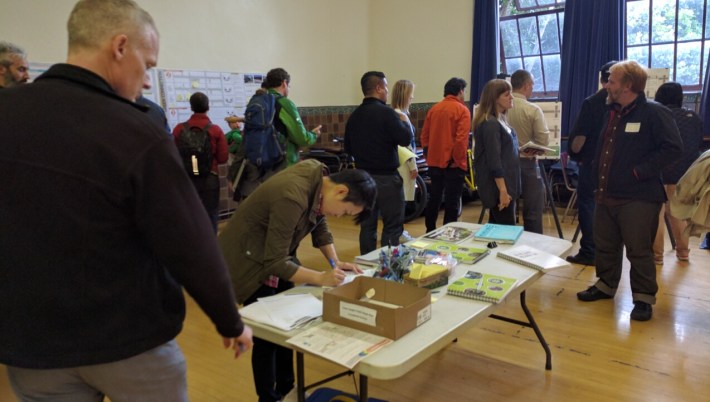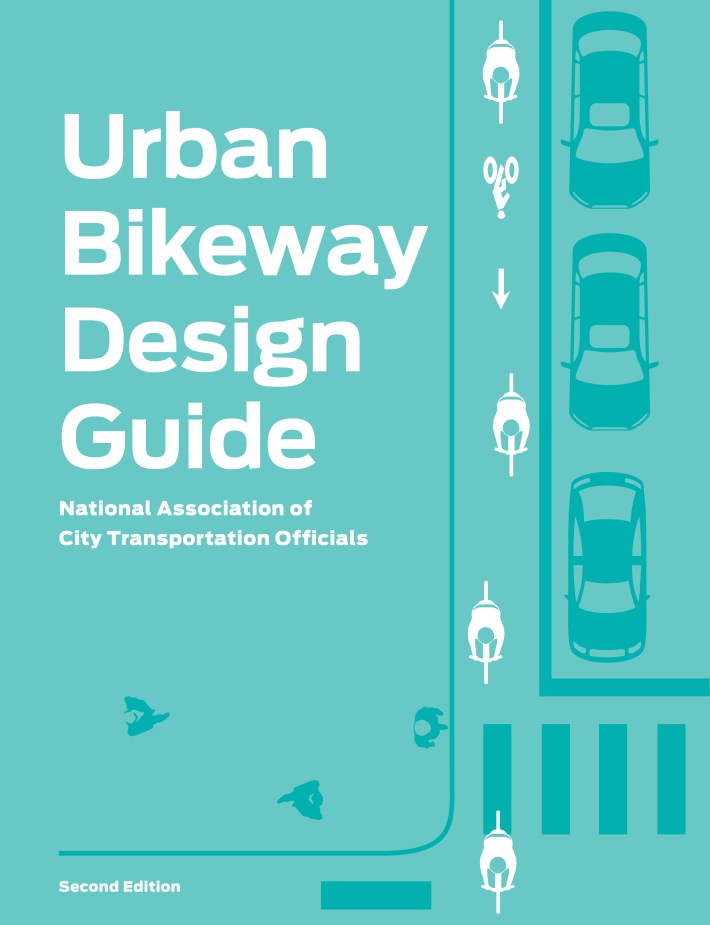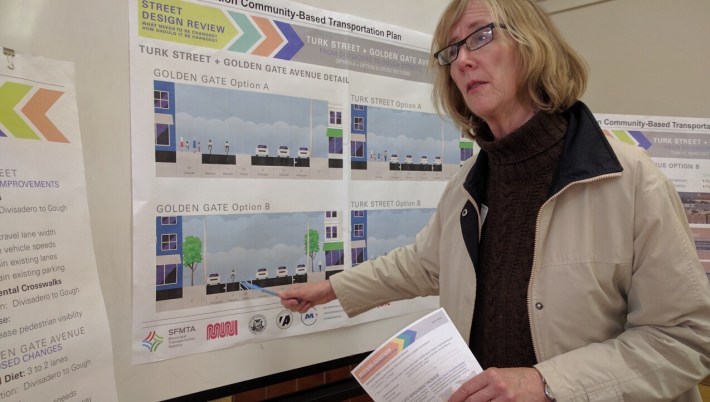
Some 30 residents of the Western Addition, Lower Haight and Hayes Valley neighborhoods (plus some interested folks from outside the area) showed up Monday night to the auditorium at John Muir Elementary School to learn about SFMTA's plans on three different, but related, projects: the Western Addition Community-Based Transportation Plan, the Lower Haight Public Realm Plan, and the Page Street Green Connections Project. From SFMTA's release about the meeting:
- The Western Addition Community-Based
Transportation Plan’s overall goal is to
improve the community’s transportation
options and enhance access to more
employment and education opportunities.- The Lower Haight Public Realm Plan is
working to develop a community-based
vision that will complement and enhance the
neighborhood’s public spaces.- As part of the Octavia Boulevard
Enhancement Project, the Page Street Green
Connections Project is about making Page
Street a more walkable, bikeable, and
sustainable corridor in the Hayes Valley
neighborhood.
Streetsblog readers can follow these projects and make comments via SFMTA's web page. Two things immediately stood out. On a table at the center of the room, SFMTA had left the National Association of City Transportation Officials (NACTO) manual. The cover features what is now widely accepted as the preferred design for bike lanes: make them protected, either by bollards, curbs, planters, or--in this case--parking.

And on the other hand, SFMTA's boards for Golden Gate. In option B, they are proposing to eliminate a traffic lane to provide a wide, buffered bike lane. But, at least in the illustration, it's still unprotected. It still forces cyclists to ride along the door zone. And it still invites double-parked cars and trucks to block it.

Which left Streetsblog wondering, along with many other visitors at the meeting, why, in 2016, is this kind of a bike lane still even in play?
Adrian Leung, a Transportation Planner at SFMTA, stressed that the designs were just early options and parking-protected bike lanes on Golden Gate are still on the table. He said parking-protected bike lanes have their own trade-offs and the public is less familiar with them. But Gail Baugh, an interested resident, disagreed, saying everyone knows what they are from the lanes in Golden Gate Park. Lanes that run alongside parked cars "just knock off cyclists," she said. James Sword, a resident of upper Haight agreed and was "shocked they don't have parking-protected lanes." Option "A" seemed better, with a median protected, bi-directional bike lane on one side. But it eliminates parking on one side of Golden Gate. And as any Streetsblog reader knows, eliminating parking ends up complicated, expensive and politically difficult to achieve.
One SFMTA official mentioned that parking-protected bike lanes reduce the overall number of parking spots too, since driveways and corners have to be day-lighted so motorists who are pulling out of driveways can see oncoming cyclists. Still, there are solutions to that, such as putting some angled parking on a side street, to make up for the loss of spots. And besides, going by the renderings, Option "A" eliminates the parking lane on one side, so how can loss of parking be the explanation?
Other neighbors, such as Makela Clay, who lives near the intersection of Oak and Steiner, suggested they improve street lighting, to make pedestrians feel safer at night. Leung said they'd like to but it's difficult since street lighting is managed by the Public Utilities Commission, not SFMTA. But he said they're working on it.

It's good to see SFMTA presenting multiple projects at a large neighborhood forum. But they need to realize that unprotected bike lanes are constantly obstructed and provide no real protection, as Streetsblog has repeatedly made clear. All bike lanes, except on the narrowest, most lightly traveled streets, have to be protected either by bollards, a raised curb, planters, parked cars, or whatever. Driveways or lost parking is not a reason to keep presenting door-death lanes as an option: tried-and-tested solutions for protected bike lanes exist for all road conditions, including roads with driveways. How many people have to get hurt before this is understood?





